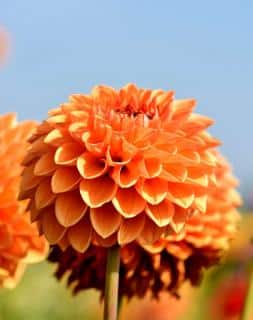

Developed in a profusion of shapes and colors, dahlias are available in a host of varieties. To promote the most beautiful and the most hardy, the distinguishing “Red label dahlia” seal of quality was created.
Red Label is one of several florist organizations that helps people identify excellence in plant breeding and horticultural practices. It is a France-based organization.
How can one choose the best varieties of a plant that counts thousands of cultivars?
With this question in mind, many gardeners who were members of the “Excellence Végétale” charity decided to set up a Red Label that would honor and recognize plants of superior quality.
Dahlias were among the first to be awarded this label in 2010, and in the following years they will be joined by rose trees and Christmas trees.
Exactly a hundred and fifty dahlia varieties of different brands and from various producers are now permitted to showcase the precious label, recognized by the French Ministry of Agriculture.
Each is chosen by a jury of experts composed of local government unit representatives, specialized press journalists and amateur gardeners. The label prizes quality bulbs, larger because they were hand-grown and selected. This practice produces plants that are more resilient in the face of disease and bear more flowers.

These bulbs are planted in April to May, at a depth of about four inches (ten centimeters). If spring is very wet, protect your young growth from slugs and snails which love to eat them: surround them with ashes or beer traps.
In summer, water with moderation and avoid getting leaves wet. Remove wilted flowers regularly in order to spur the plant into preparing new flowers. If you want very large flowers, cut the side shoots off from the plant (except for pompom dahlias).
At All Saint’s Day, after the first frost spells, unearth your dahlia bulbs. Let them dry before storing them in a dry and cool spot, where they will patiently wait to be replanted again come spring. That is also the time to replace them with spring bulbs for the garden to flower right when the weather starts looking up.
Laure Hamann